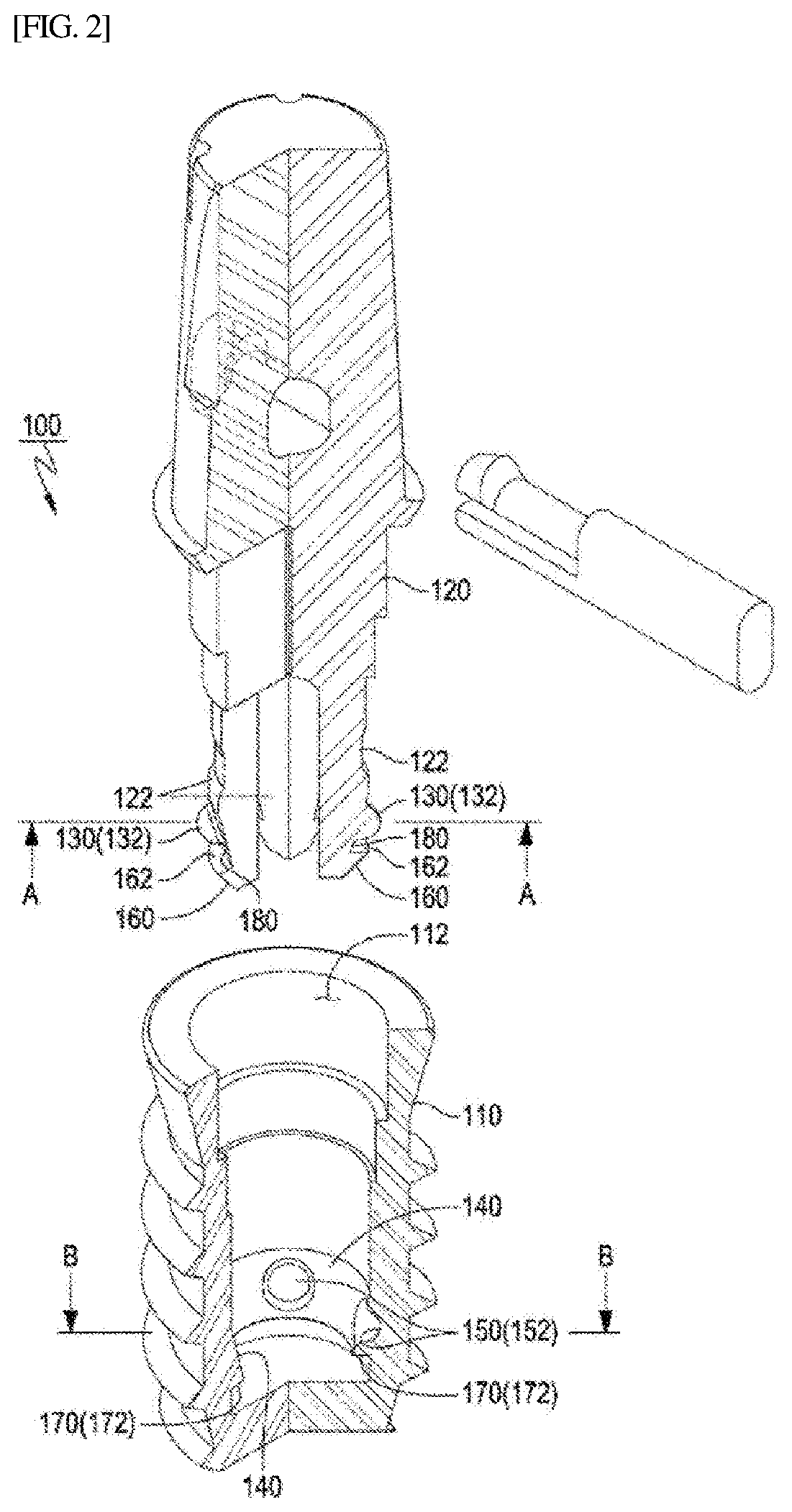Dental implants
a technology of dental implants and implants, applied in dental implants, dental surgery, medical science, etc., can solve the problems of affecting the treatment effect of patients, so as to achieve the effect of easy separation, easy detection of separation state, and easy and convenient progress
- Summary
- Abstract
- Description
- Claims
- Application Information
AI Technical Summary
Benefits of technology
Problems solved by technology
Method used
Image
Examples
Embodiment Construction
[0046]Hereinafter, preferred embodiments of the present invention will be described in detail with reference to the accompanied drawings.
[0047]The dental implant 100 according to the present invention comprises a fixture 110 forming an artificial tooth root implanted in an alveolar bone (not shown), and an abutment 120 coupled with the fixture 110 at a low part thereof and coupled with a prosthesis (crown or denture) at an upper part thereof.
[0048]An implant procedure is performed by elastically and detachably coupling the fixture 110 and the abutment 120 as shown in FIG. 1 and FIG. 2.
[0049]The dental implant 100 according to the present invention is formed in at least one coupling leg 122 that is formed in a lower part of the abutment 120 and inserted into the fixture 110. The dental implant 100 includes at least one first corresponding coupling part 130 that mainly performs a rotation prevention function with respect to rotation force less than a predetermined value. The first cor...
PUM
 Login to View More
Login to View More Abstract
Description
Claims
Application Information
 Login to View More
Login to View More - R&D
- Intellectual Property
- Life Sciences
- Materials
- Tech Scout
- Unparalleled Data Quality
- Higher Quality Content
- 60% Fewer Hallucinations
Browse by: Latest US Patents, China's latest patents, Technical Efficacy Thesaurus, Application Domain, Technology Topic, Popular Technical Reports.
© 2025 PatSnap. All rights reserved.Legal|Privacy policy|Modern Slavery Act Transparency Statement|Sitemap|About US| Contact US: help@patsnap.com



